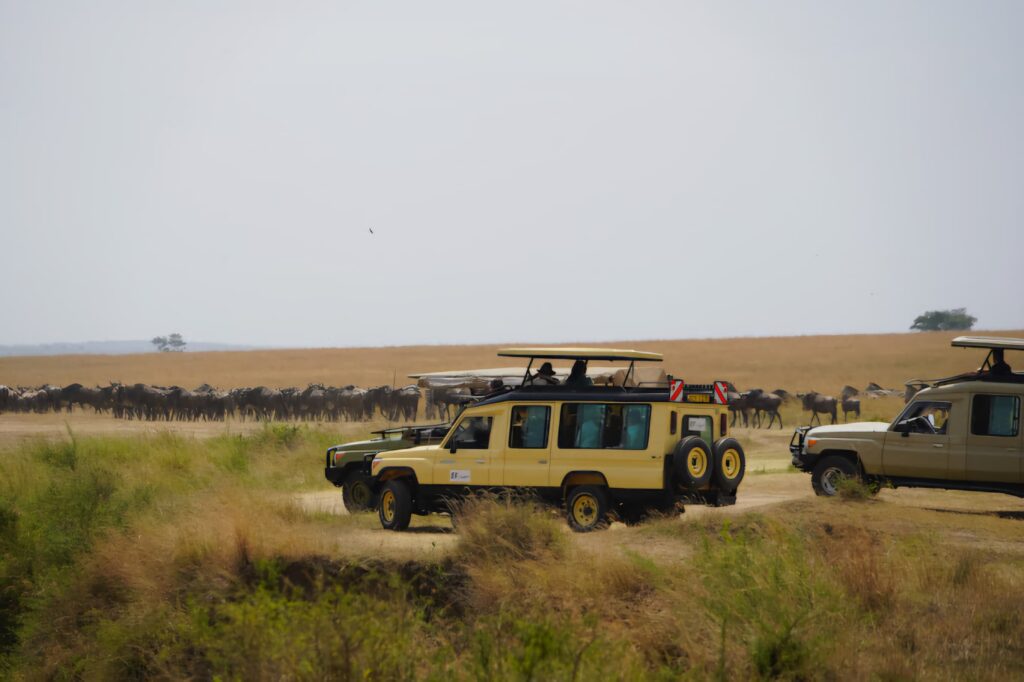The Masai Mara National Reserve in Kenya is one of the most famous and celebrated wildlife destinations in the world. Known for its incredible biodiversity, stunning landscapes, and the iconic Great Migration, the Masai Mara offers visitors a unique and unforgettable safari experience. However, the timing of your visit can significantly impact your experience. This guide will help you determine the best time to visit the Masai Mara based on various factors such as wildlife viewing, weather, and crowd levels.
Peak Season: The Great Migration (July to October)
The most popular time to visit the Masai Mara is during the Great Migration, which typically occurs from July to October. During this period, millions of wildebeests, zebras, and gazelles migrate from the Serengeti in Tanzania to the Masai Mara in search of greener pastures. This natural spectacle is often considered one of the greatest wildlife events on the planet.
Highlights
- River Crossings: Witnessing the dramatic river crossings of the Mara and Talek rivers is a highlight. Predators like crocodiles lie in wait as thousands of animals brave the treacherous waters.
- Predator Activity: The abundance of prey attracts predators such as lions, cheetahs, and hyenas, providing exceptional opportunities for viewing and photographing big cats in action.
- Weather: The weather is generally dry and pleasant, making it ideal for game drives and other outdoor activities.
Considerations
- Crowds: This is the busiest time of the year, so popular lodges and camps can be fully booked months in advance. Expect higher prices and larger crowds.
- Availability: Plan and book your trip well in advance to secure accommodation and safari tours during this peak season.
Shoulder Seasons: December to March and June
The shoulder seasons, which include December to March and June, offer a balance between good wildlife viewing and fewer crowds.
Highlights
- Calving Season (January to February): During these months, many herbivores give birth to their young, attracting predators and providing unique viewing opportunities.
- Bird Watching: The birdlife in the Masai Mara is particularly vibrant during these months, with migratory birds adding to the resident species.
- Green Season: The landscape is lush and green, enhancing the beauty of the reserve and making for stunning photographs.
Considerations
- Weather: While the weather is generally good, there may be occasional showers, especially towards the end of the rainy season in March.
- Crowds: Fewer tourists compared to the peak season, making for a more intimate and less crowded safari experience.
Low Season: April to May and November
The low season, spanning from April to May and November, coincides with the long and short rainy seasons. While this period is often overlooked, it can offer a different and equally rewarding experience.
Highlights
- Lush Scenery: The rains transform the landscape into a verdant paradise, perfect for photographers and nature enthusiasts.
- Affordable Rates: Lodges and camps often offer discounted rates, making it a budget-friendly time to visit.
- Fewer Tourists: Enjoy a more tranquil and private safari experience with fewer tourists around.
Considerations
- Weather: The rains can make some roads impassable and may lead to disruptions in safari activities. However, the showers are usually short and followed by sunshine.
- Wildlife Viewing: While the wildlife is still abundant, animals might be more dispersed due to the availability of water and food, making sightings less predictable.
The best time to visit the Masai Mara depends on your preferences and priorities. For those seeking the thrill of the Great Migration and the best wildlife viewing opportunities, July to October is ideal. If you prefer fewer crowds and a more budget-friendly experience, consider the shoulder or low seasons. Each period offers its own unique advantages, ensuring that no matter when you visit, the Masai Mara will leave you with unforgettable memories.
Tips for Planning Your Visit
- Book in Advance: Especially for peak season, ensure you book your accommodation and tours well in advance.
- Pack Appropriately: Depending on the season, pack suitable clothing and gear, including rain gear for the wet season.
- Hire a Knowledgeable Guide: A skilled guide can greatly enhance your safari experience by providing insights and helping spot wildlife.
With careful planning and consideration of the seasonal nuances, your trip to the Masai Mara can be a truly extraordinary adventure. Contact us via +254728005555 or at bookings @hawitravels.com to book your trip to Masai Mara.

















